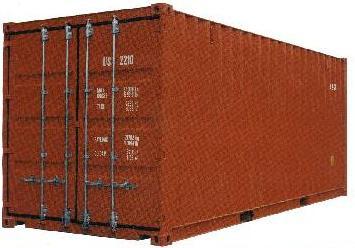A shipping container is a metal container that is used for shipping purposes. These containers come in a variance of sizes, and are able to be shipped worldwide. These shipping containers are normally waterproof in most cases, as well as airtight so that your goods are safe from the elements. There are prefixes that are used in the container numbers that are used to determine the carrier name. For example, the ACXU prefix is used in the number of and for the carrier name of Atlantic Cargo. So when tracking your shipping container online, make sure that you use the carrier prefix in your container number for proper verification.
Dry cargo container dimensions run in lengths from 20 to 45 feet in length. They are available in high cube styles and regular dry cargo container styles. Reefer or refrigerated containers are common, and come in the same lengths as dry cargo containers. These also are offered in 40 and 45 foot high cubes as well. Insulated containers are offered in 20 and 40 foot lengths for those goods that require air tight or temperature controlled shipping. Open top containers are commonly used for goods that are not in danger of expiring due to the elements. These shipping containers come only in 20 and 40 foot lengths. Flat rack containers are available only in 20 and 40 foot lengths, and are offered with collapsible or flush folding sides. The tank shipping containers are only available in 20 foot lengths, and are used for liquids of all kinds purchased in bulk such as oil, milk or gasoline. All container measurements are normally exhibited as metric measurements when dealing with countries other than the United States.
It is important to remember when tracking your shipping container, to include the detention or demurrage times. Detention is when the shipping container isn't back at the depot in time from the consignee warehouse, while demurrage is when the container that is rented and stored is located with the goods inside the correct port. Some shipping lines will charge storage and electricity on top of demurrage. You can calculate the total demurrage or detention dates by using some websites' calculators. You would need the arrival date, the empty return date and the free days on the rental. You can choose to exclude certain days of the week, and this tool will then give you a total number of days for the detention or demurrage timeframe.
Regardless of the shipping container your company uses, it is important to read through all of the information associated with that container's owning company if rented or leased. There is always fine print that must be adhered to in order for continued use of the company to go on.

